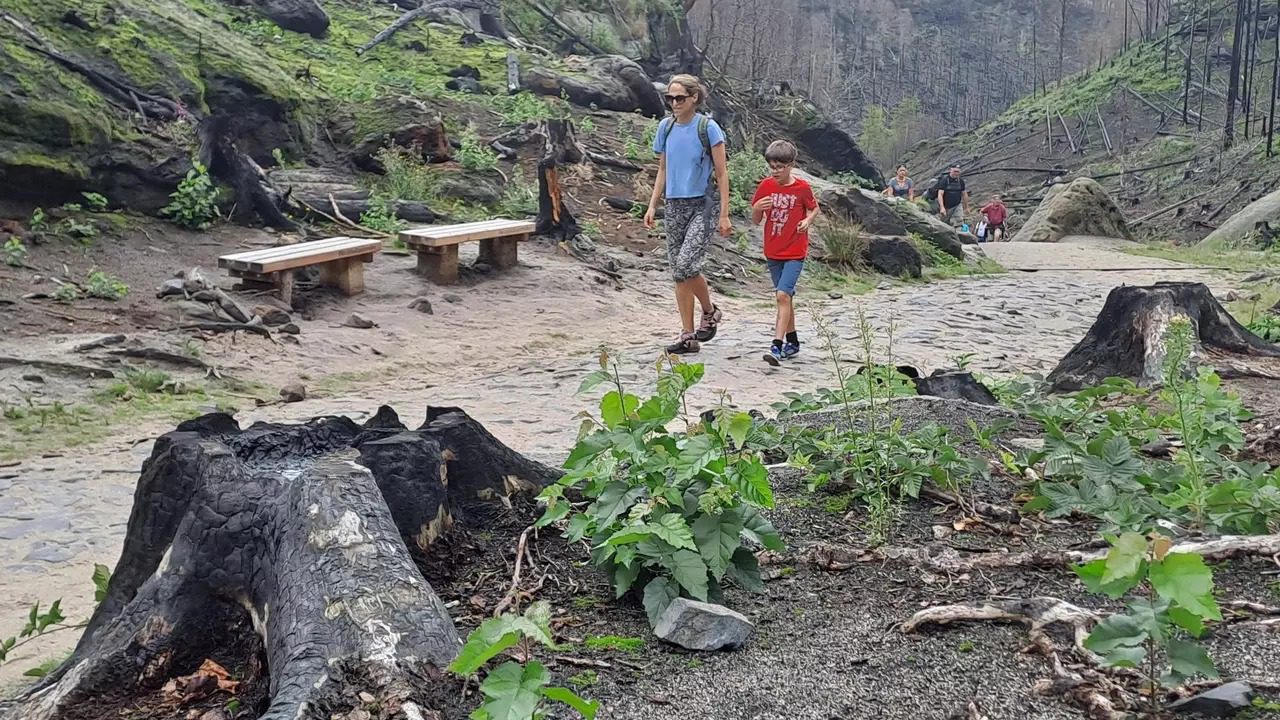In the aftermath of a devastating forest fire in the Czech National Park of České Švýcarsko, the area is making an impressive comeback. Nature in the park has managed the recovery of the vegetation on its own. Day by day, the burnt places are becoming greener, mainly ferns, mosses, and thriving birches.
According to Tomáš Salov, spokesperson for the national park, nature is well-equipped to handle similar events. He says, “It has thousands of years of experience with fire.” The fact that the vegetation is returning is no surprise to him, as he has seen similar recoveries in other areas of the park where wildfires have hit. “It is still amazing, though,” he admits.
According to Salov, experts and tourists encounter spontaneous vegetation recovery at every turn, even while the burnt areas are still smoking. “The first to recover was herbs with deep roots, such as hawkweed. Then came the mushrooms, followed by grasses. Later, the area was taken over by the moss Polytrichum commune, which gave it a special golden-green color,” Salov explained.
Forest rangers are still discovering abandoned and carelessly extinguished fires despite the natural recovery. Tomáš Salov emphasizes the importance of forest rangers in protecting the park from future wildfires. However, the number of active rangers in the park is insufficient. With an area of approximately 350 square kilometers, Salov believes that at least ten more rangers are needed. “The decision to increase the number of professional nature rangers is in the hands of the government,” he reminds.
The regrowth of vegetation will positively impact the composition of the forest, as it will lead to a natural selection process and ultimately result in a more resilient forest that is better equipped to withstand climate change and its effects. The greenery in the park is a source of wonder for visitors. “When I look at the fallen burned trees and stumps, I feel sad, but on the other hand, I’m pleased with how nature has dealt with the aftermath of the fire. It’s magical,” said Lukáš Černý, a 46-year-old tourist from Prague who is one of the thousands of people visiting the park daily.
The vegetation’s response to the fire will positively impact the forest’s composition, leading to a more resilient forest that is better equipped to withstand climate change and its effects. Forest rangers are crucial in protecting the park from future wildfires. However, the number of active rangers in the park is insufficient. With an area of approximately 350 square kilometers, Salov believes that at least ten more rangers are needed. “The decision to increase the number of professional nature rangers is in the hands of the government,” he reminds.
The rainy weather in recent days has been helping the rangers keep an eye on park visitors. “It allows them to return to their usual and important tasks, whether providing information and support to visitors in the field, maintaining public infrastructure, or monitoring animals and plants,” said Salov. The work of the forest rangers is much broader, and when they have to watch out for the possibility of forest fires, they cannot fully carry out other essential tasks.
The forest rangers are the eyes and hands of nature conservation. Without them, much of the practical nature conservation would take place only on paper,” concluded the spokesperson.





